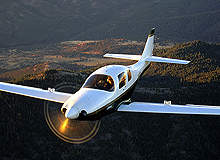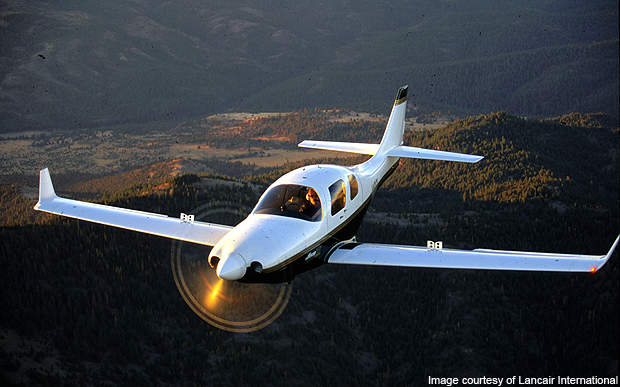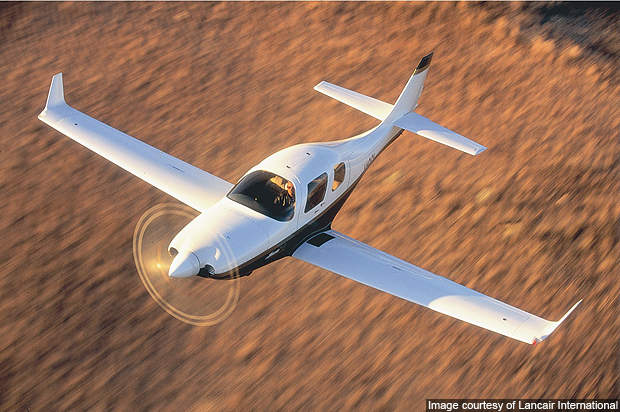Lancair IV is a single-engine, four-seat, home-built kit plane designed and manufactured by Lancair International.
It is one of the fastest civil aviation aircraft in the world. Lancair IV was the first airplane to participate in the Reno National Air Races. It can take-off and land in unimproved strips or runways even in adverse weather conditions.
The maiden flight of the aircraft took place in 1991. More than 100 Lancair IV planes are currently operating worldwide.
The National Transportation Safety Board (NTSB) of the US recorded 19 Lancair IV crashes resulting in 17 deaths until March 2010.
Lancair IV variants
Lancair IV has two variants – the Lancair IV-P and the Lancair Propjet.
Lancair IV-P is a four-seat aircraft with a pressurised cabin. This variant is powered by a 350hp (261kW) Continental TSIO-550 engine.
Lancair Propjet is a four-seat sport aircraft powered by a single Pratt & Whitney Canada PT6 turboprop engine. This, too, has a pressurised cabin and can fly at a maximum cruise speed of 556km/h.
Lancair IV design
Lancair IV was designed to operate at high altitudes. Its airframe is designed to use composite materials which provide complex aerodynamic contours that would not be possible with aluminium.
The robust wing is made up of carbon fibres to reduce weight and improve speeds. Carbon fibres are 25% lighter and two times stiffer than E-glass.
Lancair IV features
The kit plane’s fuel tank can accommodate 90 gallons with the option for an increase up to approximately 110 gallons for the reciprocating engine.
The aircraft is also incorporated with a three-axis electric trim which alleviates flight control for the pilot. It is also equipped with a firewall, a nose gear tunnel, engine mounts and fuselage bulkheads.
Landing gear
The aircraft is fitted with a tricycle type electro or hydraulic retractable landing gear system which provides constant pressure of 1100psi. The main gear is constructed with tubular 4340 steel. It is also fitted with two large 600 x 6 wheels and heavy-duty brakes.
The nose gear fitted to the front fuselage section features a single wheel which allows steering of an aircraft through a differential braking system provided its minimum speed is 20mph.
Lancair IV flight deck
The flight deck of Lancair IV has a single seat. The broadside windows provide clear visibility to the pilot. The dual side-stick controls remove visual obstruction between the pilot and the instrument panel.
Lancair IV cabin
The pressurised cabin of Lancair IV has more leg space. An on-board oxygen generating system (OBOGS), fitted on the sidewall pockets of the cabin, renders oxygen to passengers for approximately 4.5 hours through oxygen masks.
The aircraft is also fitted with ventilators to maintain a constant temperature in the cabin. A pressurisation system installed in the cabin maintains a 5psi differential pressure. The cabin also features a baggage area which accommodates 150lb (68kg) of luggage including golf bags and fishing poles.
The length and width of the cabin are 3.2m and 1.16m respectively. The height is 1.21m.
Lancair IV avionics
The avionics suite of Lancair IV includes a Garmin GNS 430W, a Garmin MX20, an XM weather radar display, a baggage door closed indicating system, a Ryan traffic collision and avoidance system, a KY-97A communications array, a KA 134 audio panel, a KR22 marker beacon and a KT 76 transponder.
The aircraft is also equipped with King distance measuring equipment (DME), an insight graphic engine monitor, a battery backup attitude indicator, a JPI FS-450 fuel monitoring system, a gear up the indicating system, a PS engineering stereo audio panel and an Alpine XM FM CD.
Lancair IV engines
Lancair IV is powered by a single Continental TSIO-550 engine which produces 260kW of output power.
The TSIO-550 is a six-cylinder, fuel-injected, turbocharged engine fitted with two magneto ignition systems, spark plugs, a TCM fuel injection system and alternators.
The TSIO-550 engine allows the aircraft to consume 15% less fuel compared to other conventional engines.
The length and width of the engine are 1.08m and 1.07m respectively. Its height is 0.85m.
The dry weight of the engine is 200kg.
The aircraft is also fitted with a three or four-bladed Hartzell propeller made up of aluminium. The diameter of the propeller is 76in (1.93m).
Lancair IV performance
The Lancair IV can climb at the rate of 7.62m/s. Its maximum cruise and stall speeds are 534km/h and 118km/h respectively. The maximum range is 2,511km. The service ceiling of the aircraft is 8,839m.
The take-off and landing distances of Lancair IV are 457m and 579m respectively.
The plane can loiter in the air for six hours. It weighs around 907kg and its maximum take-off weight is 1,610kg.






